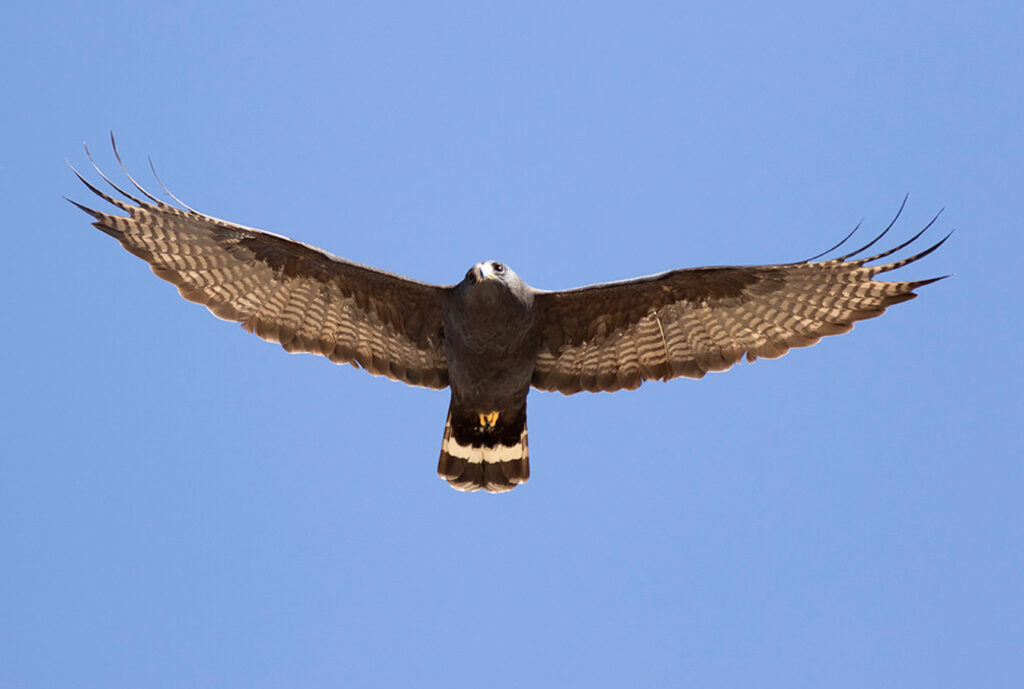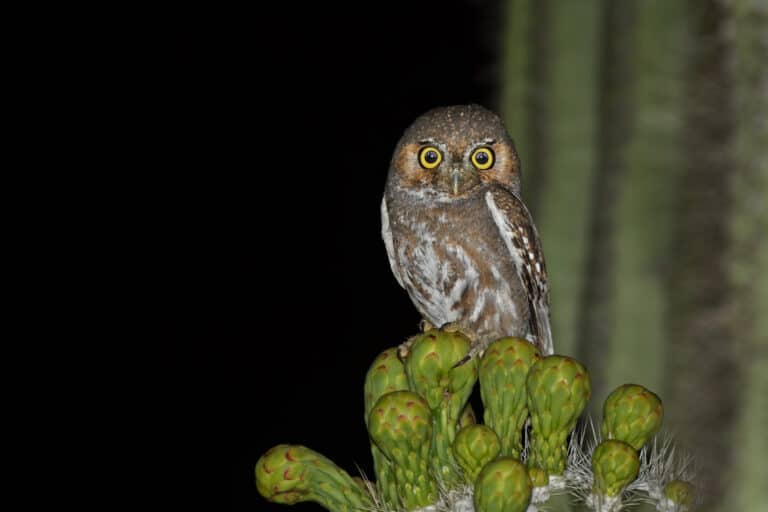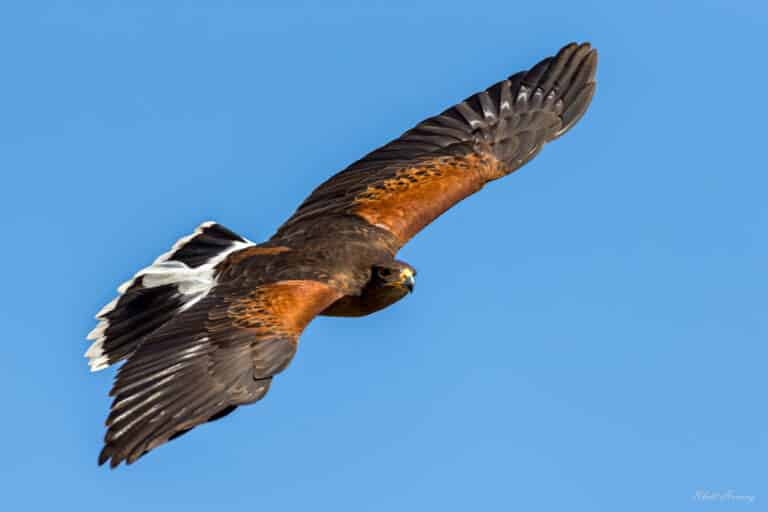After bird watching in Southeast Arizona for a while, one undoubtedly learns the time-honored tradition of “trying to turn a Turkey Vulture into a Zone-tailed Hawk.” If you haven’t yet, spring is the time to practice as these Neotropical migrant hawks arrive in southern Arizona to spend the summer. Basically, it’s very worth your time to scan a kettle of upward spiraling vultures because every now and then one of them will turn out to be a Zone-tailed. This hawk looks very similar to a vulture in flight (it even lacks the light morph exhibited by many Buteo species), and some have suggested they mimic vultures to take advantage of prey that is desensitized to the presence of vultures that mostly feed on carrion. The details we look for that prey don’t realize are the hawk’s black, feathered head and the presence of white tail bands. And they have quite the impressive prey list being foraging generalists—they’re known to feed on mammals, reptiles, amphibians, fish, and birds from Montezuma Quail to Red Crossbill and everything in between!
Zone-tailed Hawks occur in diverse lowland and higher-elevation habitats across their whole range from the US Southwest through Mexico and into parts of Brazil and Argentina. That also plays out in Southeast Arizona where they can be found along desert riparian areas such as Aravaipa Canyon as well as the high elevation forests of our Sky Island mountains. Their breeding range seems to be expanding in the Southwest, and they aggressively defend nesting territories, attacking humans and birds as large as Golden Eagles.
Zone-tailed Hawks engage in very exciting courtship flights featuring figure-eight loops, dives, barrel rolls, and “whirling” where the birds fall from the sky with talons locked together. If you see this, you can be sure you’re not looking at vultures!




